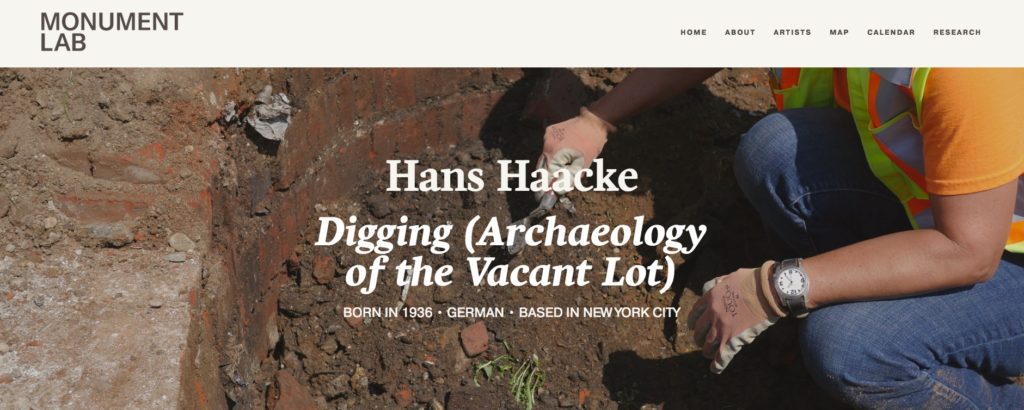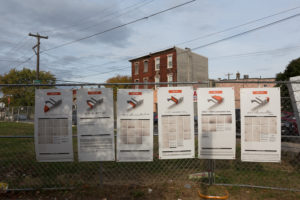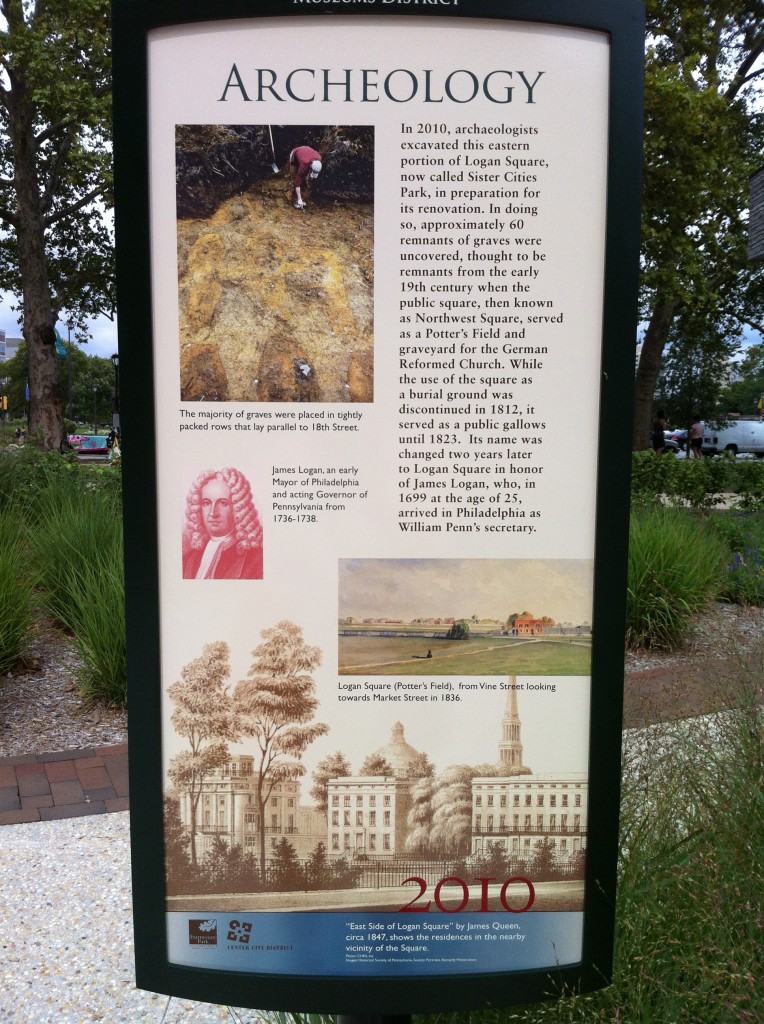Exhibits – Online and In Person
PAF Home
Philly Archaeology Blogs…
Philly Archaeology Videos…
Back to Sites and Artifacts
PHILLY ARCHAEOLOGY — ‘ONLINE’ and ‘IN PERSON’
And (Occasionally) Archaeology from elsewhere on display in Philly
***********************************************************************
Digging the City: Archaeological Discoveries from the Philadelphia Waterfront
(On-Line Exhibit)

Hosted at the URS-Burlington webpages, this website presents the waterfront archaeology research displayed in 2012 at the Independence Seaport Museum. Background information and artifact descriptions are included. Click here…
DIGGING (ARCHAEOLOGY OF THE VACANT LOT)
Archaeology as part of ‘Monument Lab’ MURAL ARTS [Past Exhibit]
Monument Lab was a public art and history project produced in Philadelephia in 2017 with Mural Arts Philadelphia. Between September 16 and November 19, Monument Lab invited Philadelphians and visitors to join a citywide conversation about history, memory, and our collective future. Artists from Philadelphia and around the world were selected for their common interest in engaging living histories in their respective artworks. As a monument to the layers of history, artist Hans Haacke proposed an archaeological dig to reveal multiple hidden foundations under a single vacant lot.
Haacke, who works with monumental sculptures and installations, sought a monument that already exists beneath the surface. He requested a site for an archaeological dig in which buried building foundations, intact underground, could be brought upward for public viewing. In cooperation with the People’s Emergency Center and property owners Alvin and Sheila Bunch, the triangular lot on 42nd Street and Lancaster Avenue [is now] a site for excavation and interpretation. This single vacant lot once held seven properties, until an automobile crashed into one of the buildings in the late 1990s, causing the owner to demolish the remaining structures. Haacke’s monument imagines the former buildings under vacant lots as not just buried and gone, but as the basis for a living blueprint to link the past and present of the city.
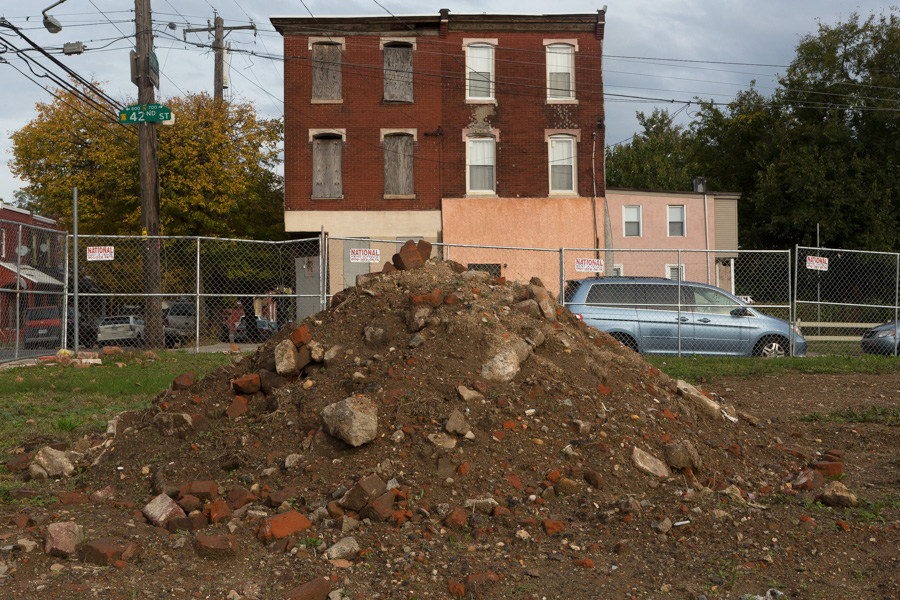
Learn more here….
Hans Haacke: Digging (Archaeology of the Vacant Lot)- A monument to history
Archaeology Supports African American History As American History
Independence Park Archaeology in the National Constitution Center’s “We The People” Exhibit
Carved wooden boat toy attributed to the woodcutter Israel Burgoe, an African American who lived in 18th century Philadelphia. The original artifact (on loan from Independence National Historical Park) as well as a 3D printed copy of the object are part of a re-mounted permanent exhibit at the National Constitution Center. (3D rotating image courtesy of Bernard K. Means, Director of the Virtual Curation Laboratory of Virginia Commonwealth University.)
Learn more and see the object rotate in 3D here…
Native American Sites in Philadelphia — Elusive but not Gone (On-Line Exhibit)

This online exhibit provides information about the rare discoveries of Native American archaeological sites within the City of Philadelphia. There are currently only about a dozen such sites documented within the boundaries of Philadelphia, with the majority located in the peripheral, less disturbed parts of the city. Only four of these known sites have been identified to date within the core downtown parts of center city. This website was created by Douglas Mooney in 2010. Click here…
John Dowell Photographs of the President’s House Archaeological Site
In 2007, the artist John Edward Dowell was commissioned by the City of Philadelphia to photograph the President’s House Site archaeological excavation in Philadelphia. This 2007 web feature summarizes the art project, introduces the artist and his medium, and outlines the archaeological excavation objectives. This online feature was created by Patrice L. Jeppson for the Philadelphia Archaeological Forum webpage.
Learn here about John Dowell’s photographs of the President’s House Site…(64MB pdf). A selection of these photographs are permanently on view at the Independence Visitors Center.
Philadelphia Excavation, Gallery of Photographs at the John Dowell website, http://johndowell.com/.
The archaeological dig at the site unearthed remnants of the foundation supporting the bow window in which Washington stood to receive visitors as well as the foundation of the kitchen where Hercules, Washington’s enslaved African chef, worked. I have explored recording the excavation site at various times of day in an attempt to capture the importance of this moment that shows the connection, as well as to quote Frederick Douglas, “the hypocrisy and its barbarity around American slavery in the face of its
shouts of liberty and equality.”
—John Dowell, 2007 Quoted in, From Taboo to Icon, Africanist Turnabout
(Scroll to 2nd to last page)
Photos Show President’s House Site on Independence Mall in a Different Light (KYW Newsradio, April 27, 2008)
“Resilient Lives”
The President’s House Site and Cheyney University of Pennsylvania Involvement
Leslie Pinckney Hill Library
Cheyney University of Pennsylvania
February 22, 2016 – December 31, 2016 PAST EXHIBIT
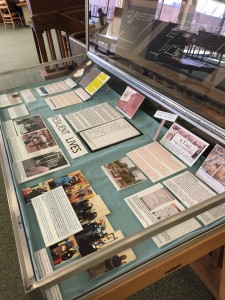
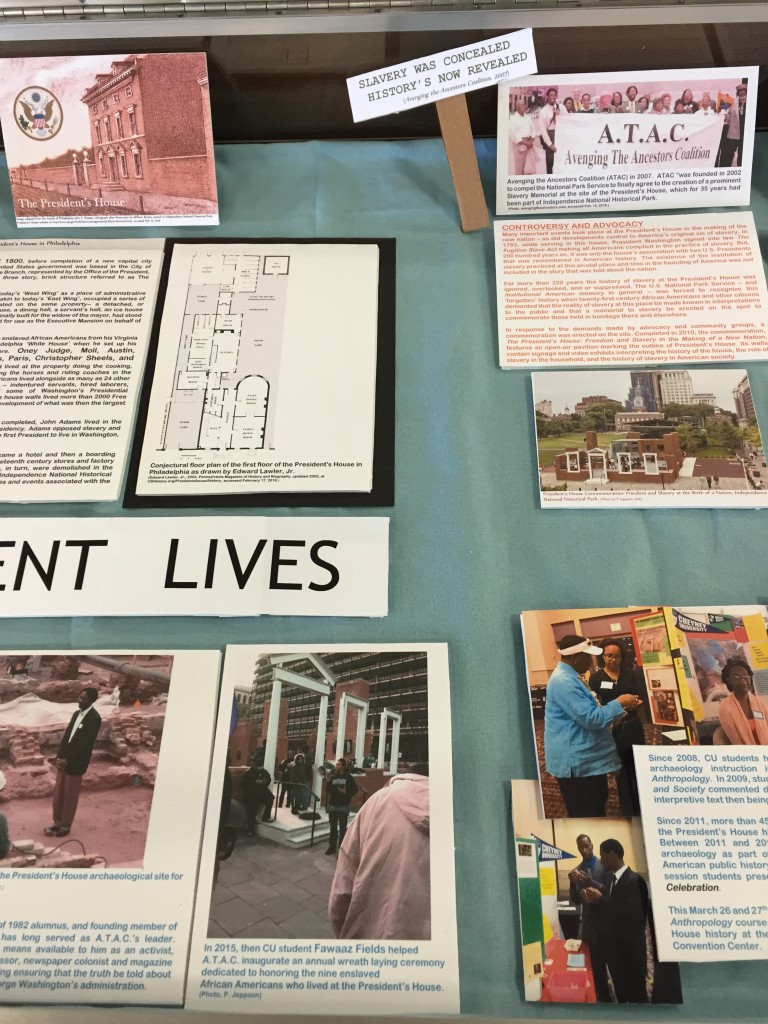
Cheyney alumni played a central role in the civic actions that forced Independence National Historical Park (in Philadelphia, PA) to include a more complete and truthful narrative in their public interpretations about the birth of the American nation at the site of the President’s House (Independence National Historical Park, Philelphia, Pennsylvania). This display highlights the history and controversy of the site and the inclusion of the archaeological results demonstrating freedom and slavery in the memorial built at the location. It shines a light on the role of Cheyney alumni who fought for a commemoration of the enslaved who once lived at the site and it presents recent and current student activities educating the public about this site.
Read an overview of the library exhibit here…
Sister Cities Park Archaeology Signage
Interpretive signage explains the archaeological resources found in Sister Cities Park, Logan Circle. The signage was erected after cultural resource excavations were undertaken in the area prior to park development completed in May of 2012. Like many open spaces in the city, Logan Square was once used as a ‘Potter’s Field’ for the burial of unknown and indigent people (meaning people of low financial means). In Philadelphia, potter’s fields hold burials of poorer African Americans and white persons, as well as persons who were not religious, and persons not resident of the city who died while in the city. The archaeological research located several such burials. Using this archaeological research, the park’s development was designed to not disturb the burials. (Click on image for larger photo.)
Photography of The President’s House Site Excavation
Photography by Matt Harris, Fox Creek Photography, at the photo sharing website SmugMug @
http://foxcreekphotography.smugmug.com/History/archaeology/Presidents-House-Archaeology/17358459_TRvGcF#!i=1319135448&k=3vX6SK3
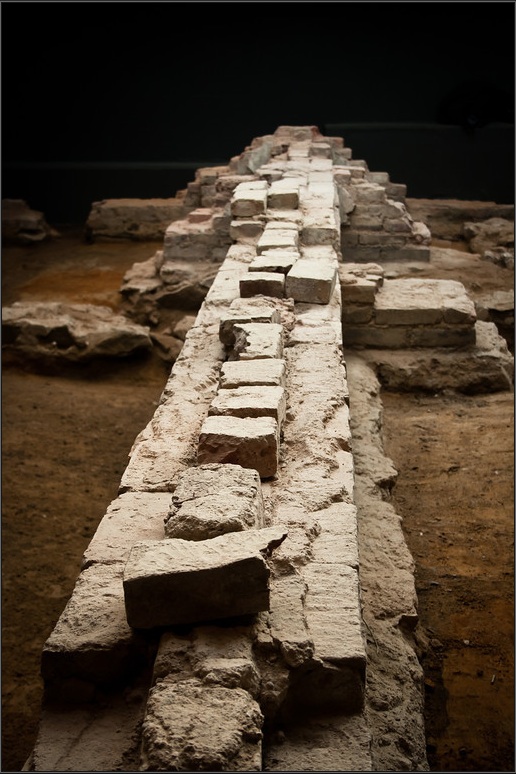
Photography of the President’s House Archaeology by Matt Harris (@ the photo sharing website SmugMug)
Dipped, Dripped & Dug: English Industrial Slipware from Winterthur & Independence National Historical Park [Past Exhibit]
Ceramics and Glass Gallery, Museum Galleries Building, Winterthur Museum, Delaware.
African American Museum of Philadelphia, July 2017 Exhibit. Past Exhibit
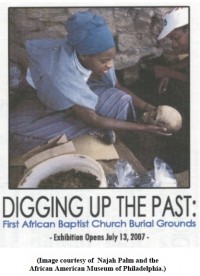
Exhibit Review, Digging Up the Past: First African Baptist Church Burial Grounds, African Diaspora Archaeology Network Newsletter, Sept. 2007.
by admin
